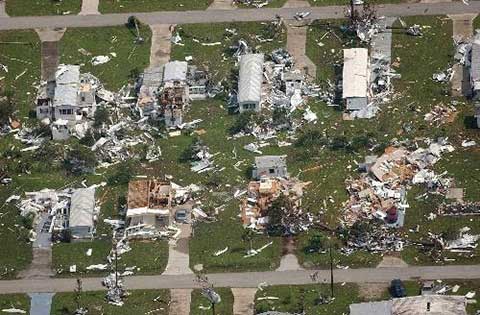News & Notes Archive - March 2005
Builder inadvertently reveals the numbers—and a bit more
I recently spoke with the V.P. of sales of a manufacturer in the Southeastern U.S. that offers, mostly as a side business, a line of double-wide homes. He was an amiable fellow. When I asked if he could send me any brochures or information on the company’s MH line, he said the person who usually takes care of that is out of the office. “Would any of your dealers be able to help me?” I asked?
“The dealers don’t know s___,” he answered. He promised to rustle up some spec sheets and fax them to me.
Ten days later, after a bit of phone and fax nudging, he obliged me, faxing a sheaf of materials, including, surprise, a price list of the actual prices charged the dealers. How revealing, I thought. He had also appended a note to advise I should add $1,500 in current materials surcharge to the prices, add an additional $10,000, then multiply the total by 135% to get the retail price.
Not sure if I understood his note, I called and asked about the $10,000. “Oh, that’s for all the options,” he explained. “No one ever buys a model at its base price. That’s just an old dealer trick to show how affordable the home is. At that price it’s bare bones minimum. The ten grand covers storm windows, insulation upgrades, appliances, better cabinets, carpets and so on.”
I chose one of the models (poor quality construction, bare bones, indeed): a 28’ x 70’ double-wide, 1800 square feet with four bedrooms and two baths—base price $33,000. Using the numbers he provided yielded a retail price of $60,075.
If the home sells for full retail, the dealer’s gross profit would be at least $15,575 but more likely $17,575 if you add the mark-up probably hidden in the options package. That’s a whopping gross profit of 39% of the dealer’s cost. Sure, that total doesn’t include the transportation and set-up costs, but it’s still outrageous. The Buyer’s Guide tells you what’s fair and how to get to that price.
What the foregoing also demonstrates, a screw-the-homebuyer mentality is still alive and well in many pockets of the MH retailer sector.
Florida hurricanes and MH —Old myths die hard, but dying they are
During Florida’s six-week-long siege of four hurricanes in 2004 the media routinely showed images of wrecked and shattered mobile homes, many of them blown off their foundations, all of which perpetuated the impression that MHs are poorly constructed, unsafe and vulnerable to severe weather. Yes, there are tens of thousands of MH in Florida built before 1976 that are vulnerable, but the truth is, since 1994 Florida building codes have required all MH built and installed in coastal communities to be engineered to withstand sustained winds of 110 mph and three-second gusts of 130 mph — 150 mph winds.

Exhibit A: Why mobile homes still have an image problem
In the aftermath of the four hurricanes, Florida MH officials surveyed 11,800 MHs among 77 parks in seven counties, including many that had sustained direct hits. Of the MH installed according to the most stringent tie-down regulations in the country, not a single home had been moved from its foundation. Moreover, none were found to have been significantly damaged.
News organizations such as Fox News, CNN and the AP finally admitted that homes built to these new codes didn’t budge an inch, even those at Punta Gorda that endured 145 mph winds.
For more, including pictures and testimonials, visit http://www.builtstronger.com, a site sponsored by the Florida MH Association. A lot of interesting info there.
Florida hurricanes and MH: the down side—your homeowner’s insurance
Since Hurricane Andrew in 1992, insurance rates for homeowners, both site-built and MH, have risen steadily. In 1991 a standard homeowners policy averaged around $350 (from Nationwide). By 2003 rates have grown to an average of $1,800-$2,100 per home.
According to the South Florida Sun-Sentinel, the 2004 hurricane season, which cost insurers $21 billion in claims paid, resulted in a new round of insurance rate increases, some of them in the double-digits. Nationwide, for example, is requesting from Florida regulators an average increase of 28.3%. Some big insurers such as State Farm Florida and Allstate Floridian stopped writing policies altogether in South Florida.
Tip: If you’re shopping for a new MH, shop for a homeowner’s policy at the same time. You may find that some home models and options together may qualify for lower policy premiums.